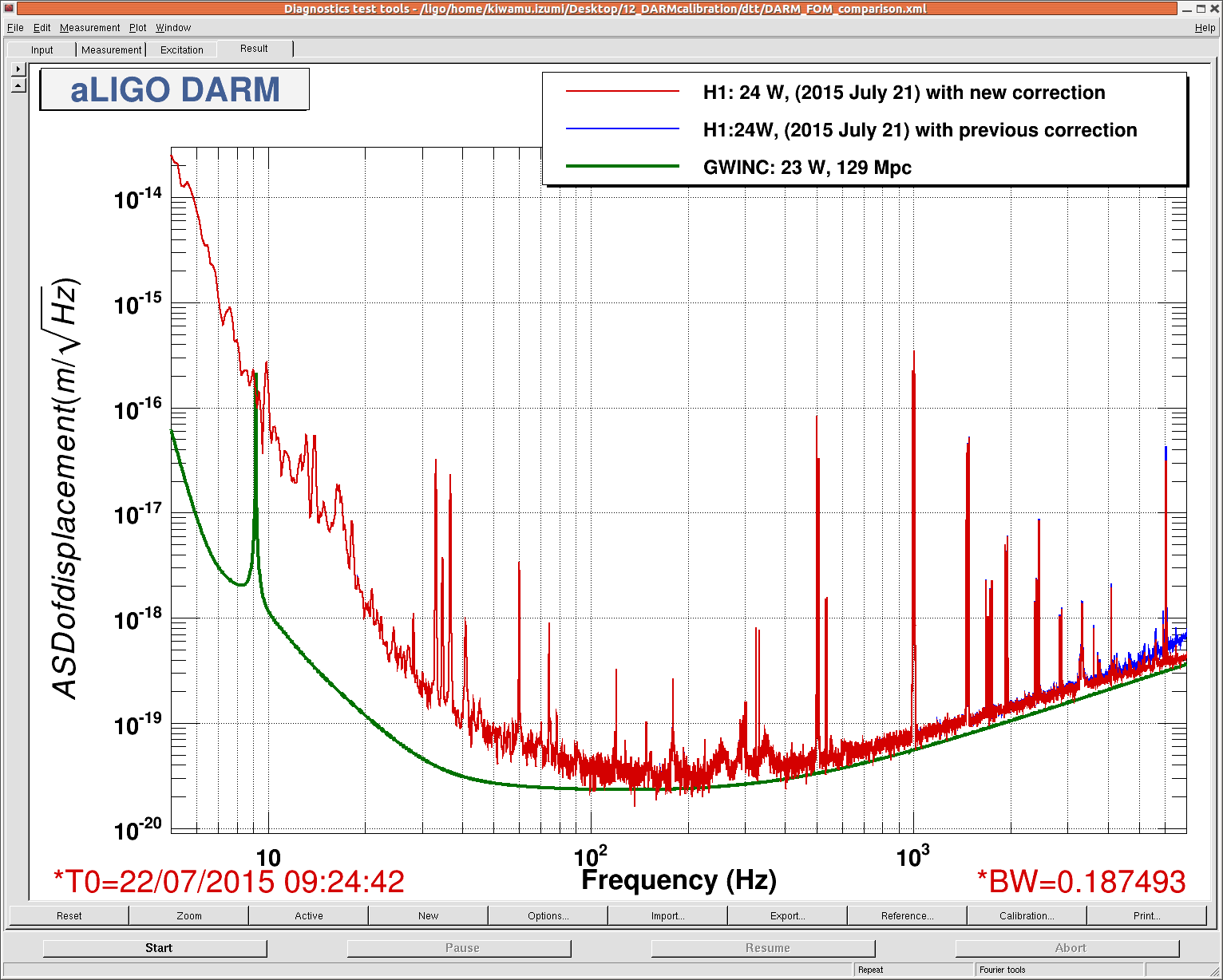- The early morning found Cheryl and myself investigating bad alignment of the IMC which is going to result in a seperate Ops Wiki page on how to deal with it and very possibly a future training session for Operators
- The PSL team took the PSL down to decrease the water flow on the table in an attempt to discover some excess intensity noise
- There was a DAQ restart. In the wake of it, the IMC WFS not triggering properly
- I got my first opportunity to add a user to the new RACESS system
- Locking this afternnoon is a daunting task as many Guardian edits have to be made to get past TR_CARM step. I expect this will be correctted for the evening shift.
17:07 Jim to EY to check on the BRS power supply and to change a setting so that it will come back up after a power outage.
17:11 BRS at EY switched off.
17:15 Jason and Peter ou to the PSL enclosure to begin work reducing flow to possibly mitigate intensity noise.
17:30 Betsy out to LVEA to do TCS inventory
17:31 Travis out to LVEA to retrieve ITM Pcal camera
17:32 Jim back from EY
17:32 Jeff K to begin charge measurements
17:36 Jason called from enclosure - LASER is going DOWN
17:59 Travis back from LVEA
18:33 Travis headed to end stations for Pcal camera work. Switching BRS Guardian to VERY_WINDY as per Jim's wiki page under the SEI tab
18:59 Jason and Peter out of the enclosure. THe LASER is ON.
19:00 DAQ restart
20:28 Start initial alignment
20:45 Switched BRS back on at both ends
21:00 Begin locking sequence




















